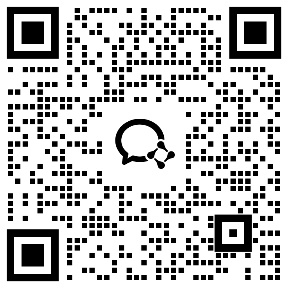元旦来历:
“元旦”,最早来自西方。大约在公元前五万年左右,古埃及人已由游牧改为农耕,定居在尼罗河两岸,他们的农业收成与尼罗河是否发生洪水有很大关系。古埃及人从长期的观察中发现,尼罗河泛滥的时间是有规律的,他们就把这个时间每次都记录在竹竿上,从中得知两次泛滥时间之间大约相隔365天,也就是一年。同时古埃及人还发现,当尼罗河初涨的潮头来到今天开罗城附近的时候,也正好是太阳与天狼星同时从地平线上升起的时候。于是,古埃及人便把这一天定为一年的开始。这就是元旦最早的由来。
中国的元旦,据传说起于三皇五帝之一的颛顼,距今已有3000多年的历史。“元旦”一词最早出现于《晋书》:“颛帝以孟夏正月为元,其实正朔元旦之春”的诗中。
中国最早称农历正月初一为“元旦”,元是“初”、“始”的意思,旦指“日子”,元旦合称即是“初始的日子”,也就是一年的第一天。夏朝的夏历以孟喜月(元月)为正月,商朝的殷历以腊月(十二月)为正月,周朝的周历以冬月(十一月)为正月。秦始皇统一中国后,又以阳春月(十月)为正月,即十月初一为元旦。从汉武帝起,才规定孟喜月(元月)为正月,把孟喜月的第一天(夏历的正月初一)称为元旦,一直沿用到清朝末年。但这是夏历,亦即农历或阴历,还不是我们今天所说的元旦。
公元1911年,孙中山领导的辛亥革命,建立了中华民国。为了“行夏正,所以顺农时,从西历,所以便统计”,民国元年决定使用公历(实际使用是1912年),并规定阳历(公历)1月1日为“新年”,但并不叫“元旦”。
1949年9月27日,中国人民政治协商会议第一届全体会议决议:“中华人民共和国纪年采用公元纪年法。”由此,我国政府采用更彻底的公元纪年法,所有政府文告、统计报表、报纸刊头等均采用公历,中国传统的农历纪年除了在重要报纸报头的公历后边标注外,官方文件中已彻底没了踪影。而元旦节日,也于1949年12月23日的政务院(即今国务院)会议上通过的《全国年节及纪念日放假办法》中,被规定为我国四大法定节日之一。今天,公元纪年及元旦节日在国人中已经逐步通用、流行、稳固。元旦与春节两个节日,称谓上不再混用。
由于最近500余年来,葡萄牙、西班牙、荷兰、法国、英国、德国、美国等基督教国家的影响,纵横世界各大洲,也由于公历的相对精准,公元纪年法被世界各国纷纷采用,元旦作为节日,在西方比不过圣诞节,在中国比不上春节,但由于其本身的世俗性、非宗教性,反而因此成了一个世界性的节日。
元旦的英文介绍

New Year's Day is the first day of the lunar calendar. it is the day when the earth has circled the sun for one round and is beginning another circling. it represents a new beginning when people send off the old days and welcome the new ones. as the first day of the year, yuandan has been considered to be the most important festival since the ancient times.
元旦是农历的第一天。这是一天,当地球绕着太阳转一圈,正在开始另一个循环。当人们送走旧的日子,并欢迎新的朋友的时候,它代表了一个新的开始。作为一年的第一天,元旦已被认为是自古以来最重要的节日。
customs
1.kaisui(beginning of the year): according to the chinese traditional custom, starting from haishi(9p.m. to 11p.m.)of the last evening of the twelfth lunar month, each family must prepare offering s to deities at the altar. at the same time, they too prepare food for the new year day: the whole family will then stay awake together to attend to the year(called shou sui). after haishi, zishi(11p.m. to 1a.m.)will come, and this is the arrival of new year(yuandan). at this moment, people begin the celebration with fireworks. vegetarian and sweet foods will then be placed are the altar for offerings, and incense be burned to welcome the deities. in the ancient times, it was believed that haishi connected the two years and thus was called kaisui.
At the same night, some families will follow the instruction in tongshu and place preparing altar in the direction of the "fortune deity" during the "fortune time" to receive the deity. if the direction of the "fortune deity" is at the "ill position", people will choose to receive "happy deity" or "noble deity" instead.
习俗
开岁(一年的开始):根据中国传统习俗,从亥时(21点到23点)的阴历第十二个月的最后一个晚上,每个家庭必须准备提供的s到神的祭坛。同时,他们也准备了新的一年的食物:整个家庭,然后保持清醒,一起参加一年(称为守岁)。在亥时,子时(23:00-1:00.)会来的,这是新的一年的到来(元旦)。在这一刻,人们开始用烟火庆祝。素食和甜食,然后被放置在祭坛,和香被烧毁欢迎神。在古代,人们认为亥时连接两年,因此被称为“开岁”。
在同一天晚上,一些家庭将按照在统和地方在“幸运神”在“财富时间”得到神的祭坛方向准备指令。如果“财富之神”的方向是“不适的位置”,人们会选择接受“快乐之神”或“高贵的神”。
2. There is an apparent difference in the custom of food taking on yuandan between the chinese in the northern and southern regions. the northern chinese has the habit of taking jiao zi(dumpling made of flour with vegetable and meat wrapped inside). some people may put a sweet or a coin inside jiao zi, hoping to have a sweet year after tasting the sweet and a wealthy year after tasting the coin. on the other hand, the southern chinese have the taboo for killing on yuandan. therefore, they do not take meat in tee morning of yuandan, so as to avoid bloodshed or mutual slaughter. in order to evade misfortune, they have the first meal of this day without meat. instead, they take vegetarian food for the sake of virtue.

在以北部和南部地区之间的中国的元旦食物习惯明显不同。北方人有取饺子的习惯(饺子是用面粉做的,里面有蔬菜和肉包)。有些人可能把一个甜的或一个硬币内的饺子,希望有一个甜蜜的一年后品尝的甜蜜和一个富裕的一年后,品尝硬币。另一方面,中国南方有就元旦杀害禁忌。因此,他们不参加的元旦早上发球肉类,以避免流血或互相残杀。为了逃避不幸,他们在这一天的第一顿饭没有肉。相反,他们以素食为美德。
3. What is special during the new year is that parents or elders will distribute red packets(ang pao or ya sui qian)to the children. people in the ancient times were more particular in giving away the red packets: the distribution took place on the eve of new year so that the kids could suppress the past year and enter the new year. ya sui has the meaning of overcoming the unpredictable future. representing the wishes for the healthy psychological growth of the children, ya sui qian symbolises the elders' hope to see their children overcome all the unpredictable elements brought by the "year".
新的一年里有什么特殊的是,父母或长辈会把红色的包(和“包”和“你的钱”)分发给孩子们。远古时代的人们更特别地在赠送红包:新的一年的除夕之夜的分布,使孩子们能压制过去的一年,进入新的一年。“雅”的意思是克服不可预知的未来。代表对健康儿童心理成长的愿望,压岁钱象征长老希望看到自己的孩子克服各种不可预知的因素所带来的“年”。






